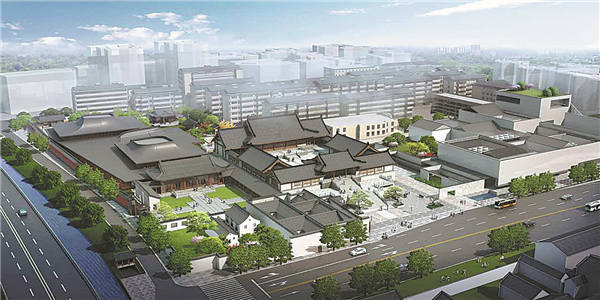

Systematic research
Zhuo Jun, deputy director of the Hangzhou Municipal Bureau of Gardening and Cultural Relics, said the Deshou Palace site is a rare example from that time in history, adding that it has undergone systematic archaeological research.
The palace gardens incorporated styles used for those at royal residences and gardens in the Yangtze River Delta, the research shows. "The Deshou Palace gardens are also of important cultural and technological value," Zhuo said.
According to a paper published by Sun Peifang, researcher at Zhejiang University of Science and Technology's School of Civil Engineering and Architecture in Hangzhou, gardening technology in China experienced a transition during the Song and Yuan (1271-1368) dynasties.
However, the classical gardens that remain in the country were mainly built in the Ming (1368-1644) and Qing (1644-1911) dynasties, and there are no examples of gardens from the Song and Yuan dynasties.
As the Deshou Palace ruins from the Southern Song Dynasty mainly comprise large-scale garden buildings, the ongoing archaeological and restoration work at the site will fill gaps in the gardens' history during the Song and Yuan dynasties.
Humid weather, abundant rainfall and complex geological and hydrological conditions in eastern China, where Hangzhou is located, pose challenges to protecting the Deshou Palace site.
Lang, from the Hangzhou Municipal Bureau of Gardening and Cultural Relics, said, "As Hangzhou has a high groundwater level and also humid and rainy weather, we are setting up facilities around the site to control the humidity."
In addition to the weather, the location of the palace site, in Shangcheng district, downtown Hangzhou, has been discussed at length. Over 10 remains from the Southern Song Dynasty have been unearthed in Shangcheng, more than at any other place nationwide.
Meng said: "Some areas of the palace site that have not been excavated lie about two to three meters below office and residential buildings and also roads. For fear of potential damage, we have decided against excavating the relics and moving them away.
"We mainly protect the site by using physical methods, rather than chemical techniques-sheltering the ruins to prevent damage from the rain and sun. We also maintain a constant temperature in the exhibition rooms to better preserve the relics."
Due to the special requirements for preservation, work at the site has been constrained for the past two decades, and the venue has not been fully developed and used for many years, according to the Hangzhou government website.
Before the restoration project began, the site was covered by large areas of old residential buildings and parking lots.
Fang Xiaoying contributed to this story.